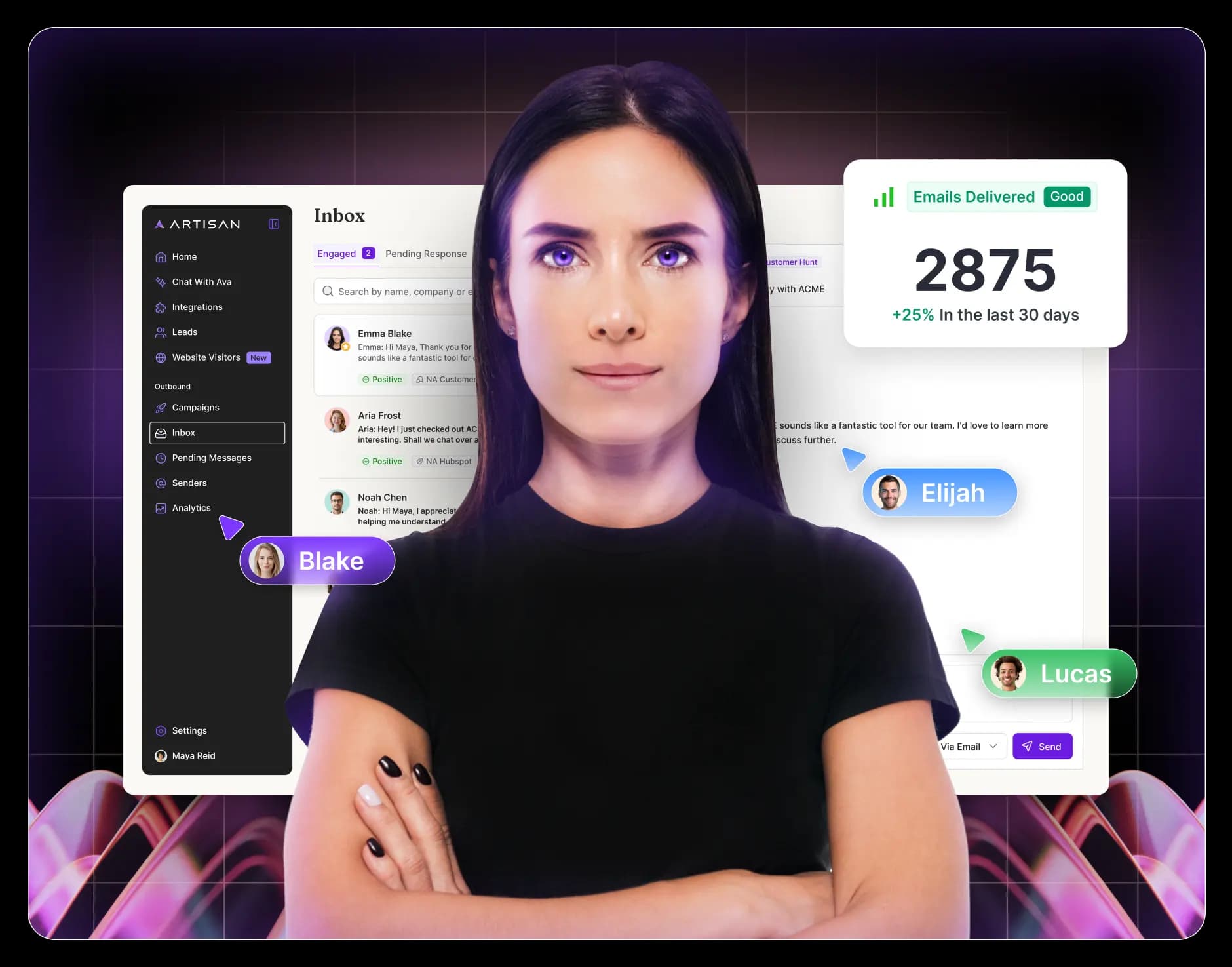11 Effective B2B Sales Channels to Drive Growth and Revenue
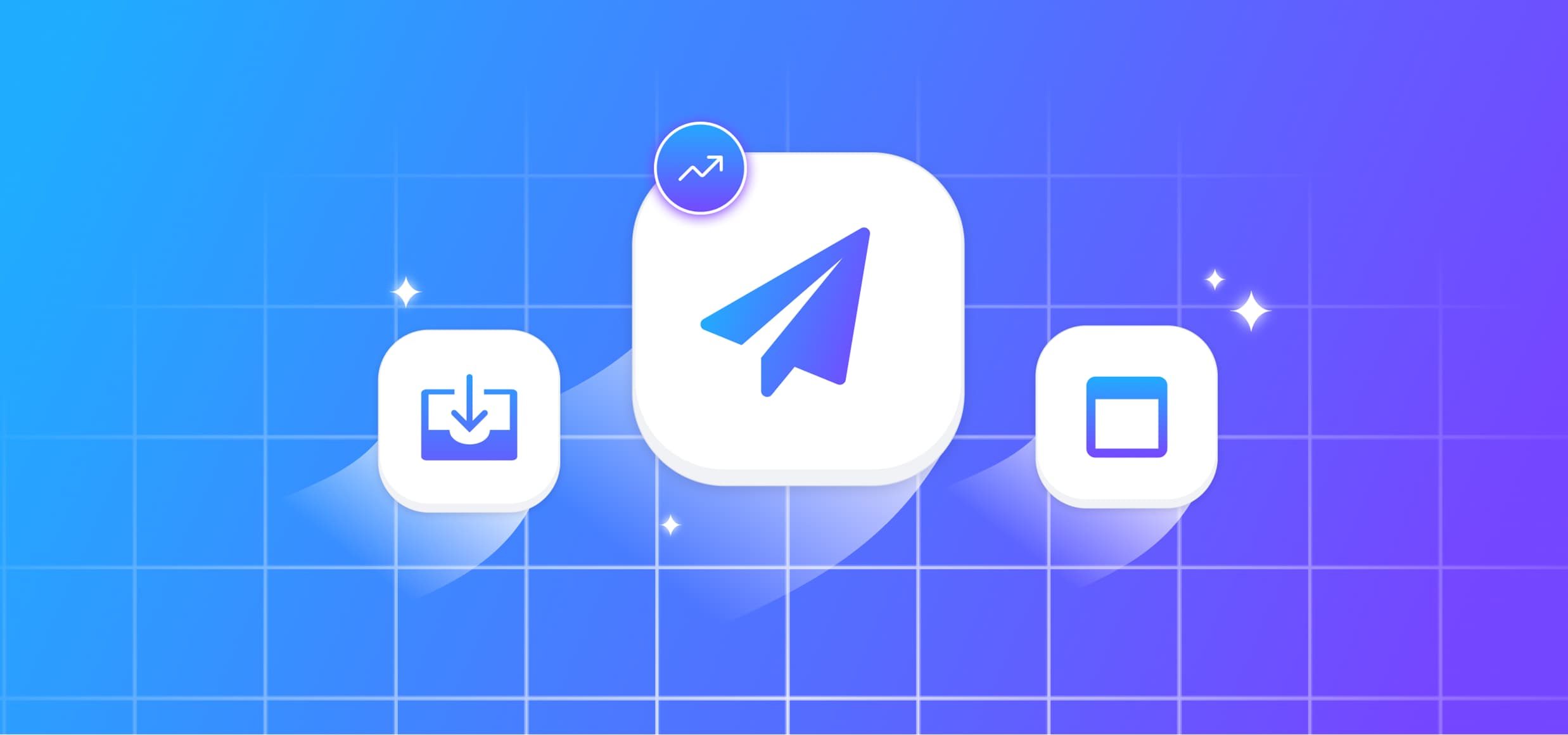
Gone are the days when brands tried to build their presence all over the place, jumping on every opportunity to boost awareness and attract leads.
Today, less is more. Successful founders and leaders know this mantra well and strive to instill it in their teams.
However, what should be a freeing feeling of narrowing your focus often adds an extra challenge for sales teams: Which channels should you focus on?
With so many options for online and offline sales channels, it’s overwhelming to decide where to invest your time and resources. To help you make this decision, we’ve reviewed eleven channels that have the highest potential for B2B sales teams.
The Importance of Choosing the Right B2B Sales Channels
Cold outreach or digital advertising? Conferences or email marketing? Choosing the right sales channels isn’t just about maximizing ROI; it may actually define your company’s long-term success. Here’s how.

Building Awareness With the Right Audience
The buyer’s journey is never linear, especially in B2B. Often, the sales process begins long before a customer responds to your first sales email.
It starts when they first discover your company and remember the information. This could be through a cold outreach message they never replied to, a social media ad, or your speech at an industry conference. If the channel is right and puts you in front of the right audience, it will boost your sales performance in the long term.
Efficient Lead Generation and Sales Growth
Choosing the right sales channels will inevitably help you grow faster and scale more easily. You won’t have to spend hours convincing irrelevant leads that your solution is right for them (when it’s not).
Say, you might drive tons of leads with a social media ad offering freemium access to your enterprise-level solution. Thousands in ad spend and hundreds of sales team hours—only to get a handful of prospects that convert into paying customers. But if you focused your resources on outbound sales, you could generate fewer but more qualified leads and achieve higher conversion rates.
Personalized Interactions With Potential Customers
Your sales channels should help you build rapport with your prospects.
Some channels, such as social selling or cold outreach, provide a direct means to interact with customers. Others, like webinars and blogs, offer a platform to foster a sense of connection with your audience. Whichever you choose, these platforms are where you can build trust with potential customers and make an impression before diving into sales calls.
Better Understanding of Your Target Audience
You may not discover the right sales channel on your first attempt. However, you will gain a deeper understanding of your ideal customers.
Each channel allows you to gather insights about your target audience: their preferences, online behavior, and what influences their decisions. Plus, many channels provide useful data and analytics, giving you deeper insights into their behaviors.
With this data, you can identify what works best and optimize not only sales but your entire business strategy for maximum impact.
11 Effective B2B Sales Channels You Should Explore
So yes, choosing the right B2B sales channel goes beyond reaching your sales KPIs. It's your chance to build an engine that connects your brand with the right audience and fosters long-term relationships for the future.
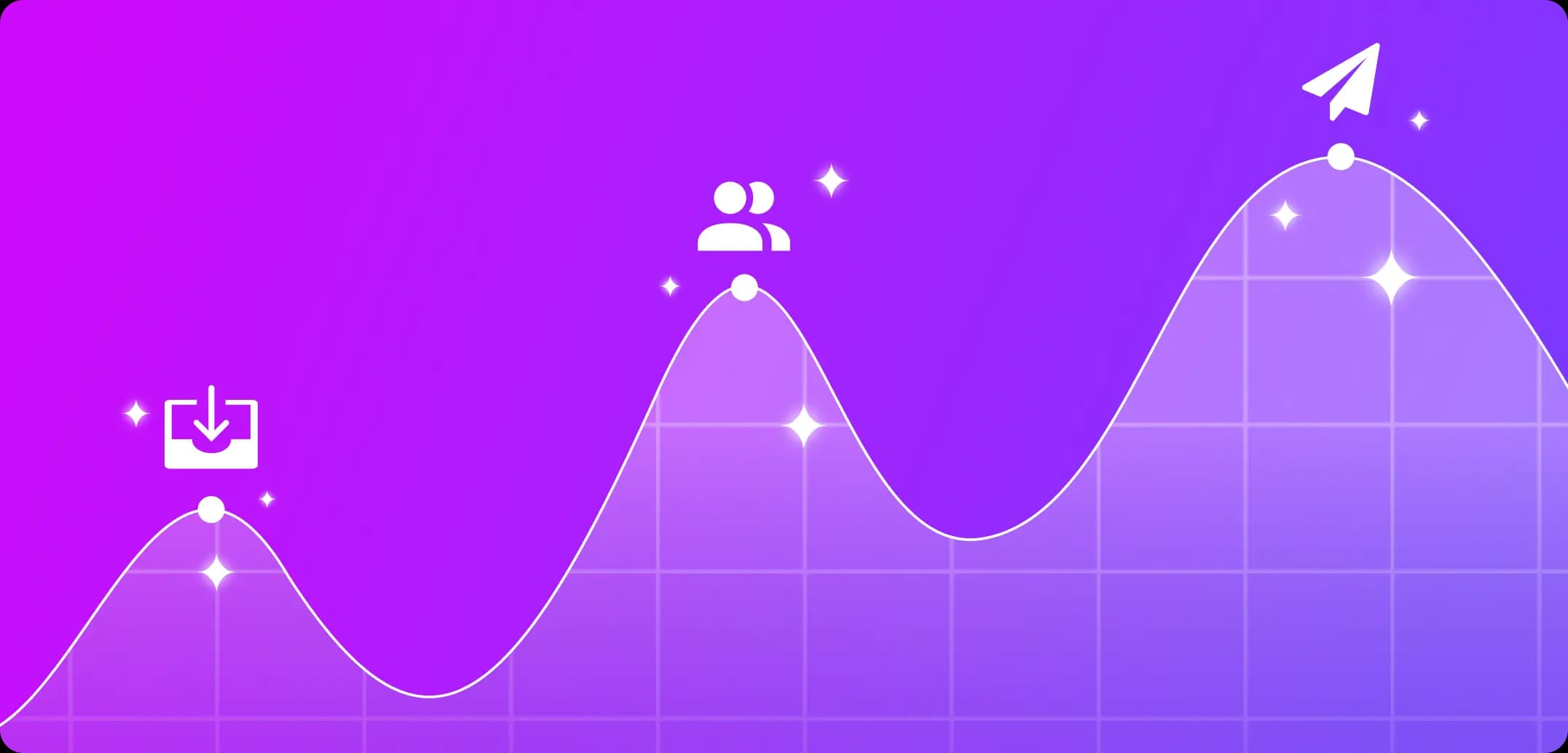
With that in mind, let’s walk you through the top channels you should consider for your sales strategy.
1. Direct Sales and Cold Outreach
What if, instead of spending your budget on a scattershot approach (sorry, inbound sales), you invested it in reaching your exact audience?
This “channel” has been here for ages. Ever since early humans started to exchange food for other valuable resources, humanity has been hooked on direct sales.
The approach has remained largely unchanged until AI revolutionized it. Not long ago, an SDR had to spend hours identifying and prioritizing potential customers, carefully crafting and sending outreach messages. Today, things are different.
Outbound sales, a.k.a. direct sales, is no longer the most resource-intensive task for your sales team. AI-powered outbound sales software has made this channel more accessible to everyone—you don’t need a large SDR team to make it work anymore.
How does it work? AI SDRs take over the lead research and cold outreach processes, handing over qualified leads to your pipeline. All you need is a strong understanding of customer personas—AI SDRs will do the rest.
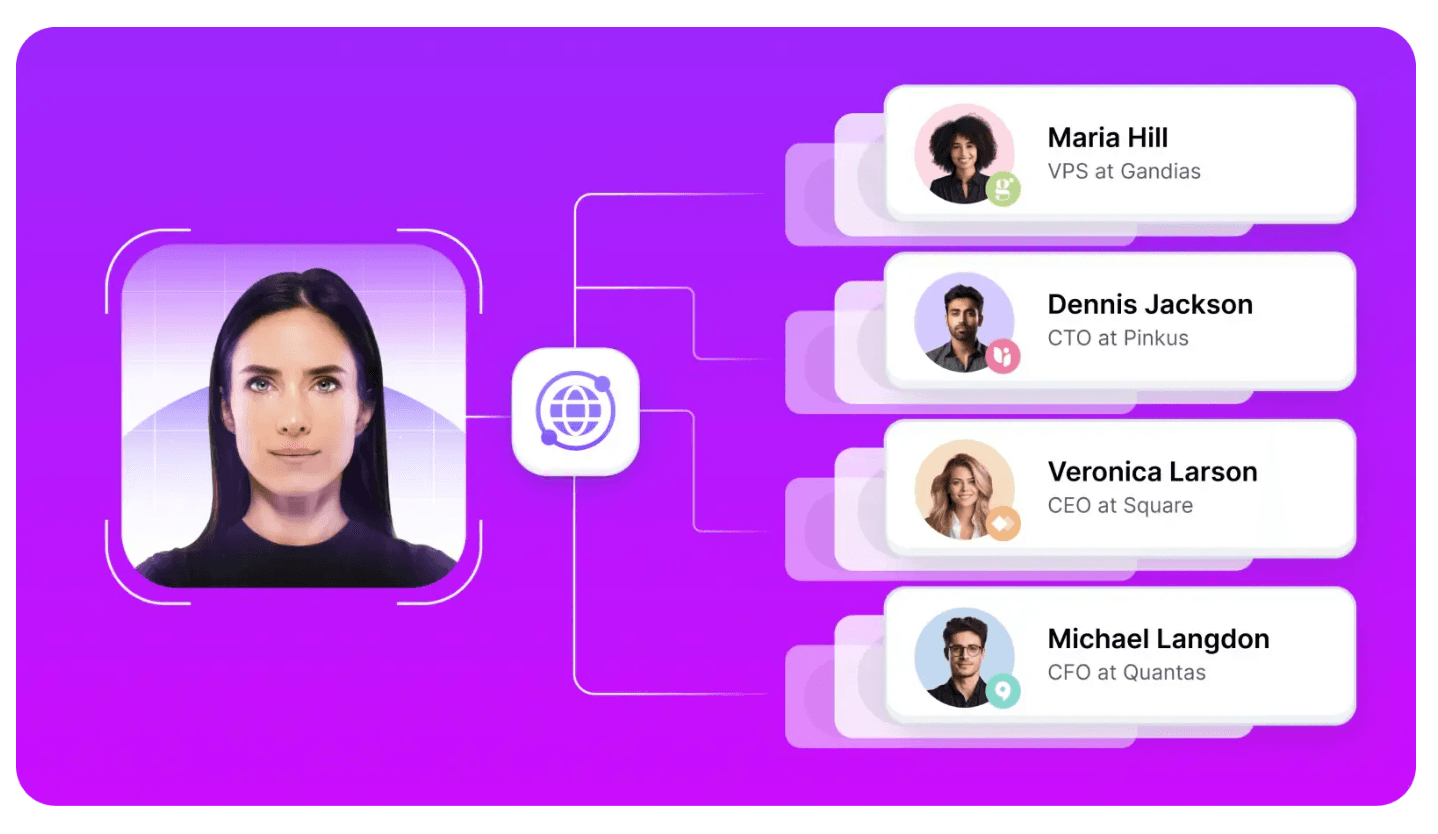
For instance, Artisan’s SDR Ava learns about your ideal customer profile (ICP), searches her database of over 300 million contacts in over 200 countries, and creates an outreach campaign to reach the top-matching prospects with highly personalized messages.
The result? Ava automates 80% of the outbound sales process. She allows you to build a scalable direct selling machine on autopilot—all without increasing overhead. Try Ava today.
Our verdict is that direct selling and cold outreach are a must-have channel for B2B businesses. Whether you combine it with inbound sales techniques or not, it should be the core of your sales strategy.
2. Social Sales on LinkedIn
LinkedIn is a powerhouse for B2B social selling. As this channel doesn’t need long introductions, let’s dive into how you can effectively integrate it into your sales strategy.
There are many ways to sell on LinkedIn, both outbound and inbound. They include:
Manual lead generation: identifying leads based on criteria like job title, company size, and industry, then initiating contact through personalized messages on the platform.
LinkedIn Sales Navigator: using LinkedIn’s premium tool to access advanced audience filters and automate lead tracking.
Brand building: developing a strong personal or company brand on LinkedIn through strategic marketing efforts to build trust with potential customers and attract inbound leads.
AI-powered automation: employing automation tools like Artisan or Apollo to discover and export qualified leads from LinkedIn and start cold outreach via email.

But before jumping in, ensure your audience is active on LinkedIn. While it's particularly popular in the tech sphere, other industries are often less represented on the platform.
3. Conferences and Networking Events
Direct selling allows you to connect with your prospects face-to-face, and so do offline events.
Attending trade shows and industry conferences, whether as a speaker, exhibitor, or attendee, is a great strategy for promoting your brand and starting to sell your products or services with minimal investment.
Here’s how you can find relevant events in your niche and turn them into your sales channel:
Follow top voices in your industry on social media platforms (LinkedIn is a good place to start). Check their feeds for the past year to see where they have been speaking—these events are likely to recur soon.
Focus on small-scale events. However enticing a major conference like Web Summit might sound, you’ll find more success at niche meetups.
Sign up as an attendee first. You’ll have the opportunity to connect with other participants and discuss business directly, without the pressure of preparing and delivering a speech.
Research other attendees. If the event page displays who’ll be present at the event (also common on LinkedIn), look into the attendees’ profiles to identify your potential buyers in advance.
Prepare an elevator pitch. Be ready to present the most important information about your business in about 30 seconds when people ask what you do.
Have the helpful resources at hand. Ensure you have easy access to all the links or contact information you might need to share.

And remember that, unlike typical outbound sales, promoting your company at networking events requires a more subtle approach. Avoid greeting people with a direct sales pitch.
Note: This approach makes sense if you sell high-ticket products or services. If you sell basic subscription-based software, applying as a speaker will bring you much more exposure and potential leads.
4. Webinars and Online Industry Events
Seventy-seven percent of surveyed marketers say virtual events have a more positive impact on lead generation than in-person events. Of course, this is only true when you run your own event or join one as a co-host or sponsor.
If you aim to generate qualified leads at scale, webinars and podcasts are the way to go.
Here are a few tips to plan a virtual event as a lead capture initiative:
Understand who you want to reach. Be specific.
Develop an agenda that is both relevant to your target market and aligned with your value proposition.
Select a reliable platform that supports interactive features like Q&A, polls, and chat to engage your audience.
Build a landing page with a lead capture form.
Use email marketing, social media, and your website to spread the word and encourage registrations.
That being said, webinars as a demand and lead generation tool don’t work for everyone. If you lack the resources to develop high-quality content, engage subject matter experts, and run a promotional campaign, it will simply become another hyped-up channel in your arsenal that fails to deliver the desired results.
5. SEO and Content Marketing
Known as digital marketing tactics in the first place, search engine optimization (SEO) and content marketing are also the primary channels to drive inbound leads.
Ninety-six percent of consumers research their options before talking to a sales rep. So, having a website should be a no-brainer for every business. However, there's a catch.
Here's the thing: just having a website and sprinkling it with keywords won't cut it. To get your website noticed in a competitive field, it takes months or even years of continuous effort to create, optimize, measure, and so on.
So, before you invest your time and money into growing your company website, ask yourself:
How competitive is your industry? Use an SEO tool to check the difficulty of your target keywords. If it's above 50%, you're in a tough crowd.
Do you have the resources to hire an SEO expert or manage a team?
Are your competitors showing up in search results? If they're not, why not?
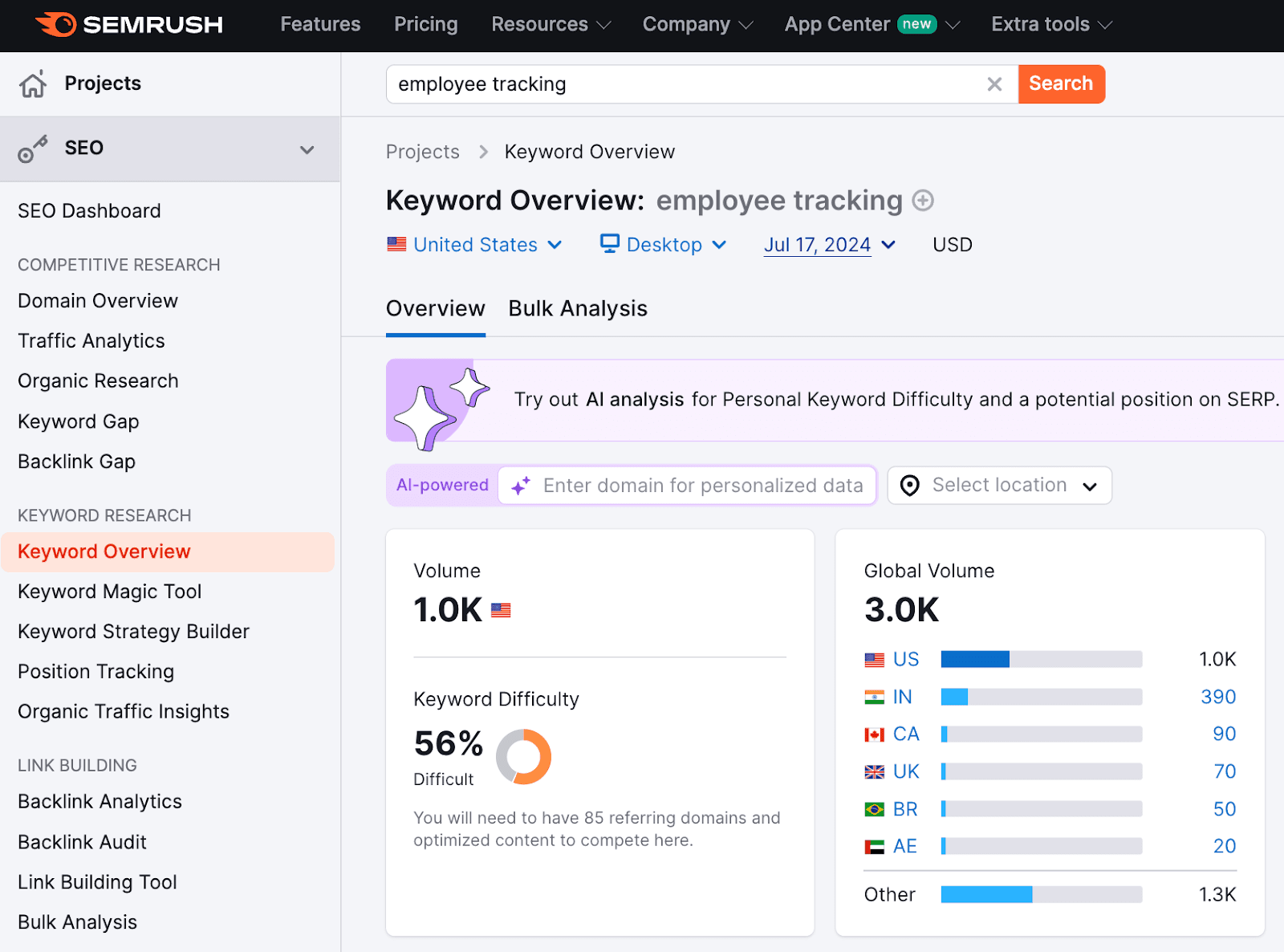
If your industry is highly competitive and you're ready to commit to the long haul, investing in SEO can pay off big time.
In a less competitive niche, spending a few hours optimizing your site with relevant keywords and content can get you on the first page of search results within weeks. If it ends up driving qualified leads, you've successfully identified a valuable sales channel for your business. If not, there's no harm done.
6. Email Marketing
Email marketing is the most implemented marketing tactic and is also a highly effective sales channel.
Think of it as a consent-based form of cold outreach. Instead of cold-calling or sending unsolicited messages, email marketing reaches potential customers who have willingly signed up to receive communication from your brand.
It’s often a natural next step after lead generation efforts where leads aren’t yet ready for direct sales pitches.
Here’s how you can make it work:
Collaborate with the marketing team. Work closely to align your marketing strategy with sales efforts.
Build a quality email list. Gather contacts through sign-ups, subscriptions, or opt-ins on your website and other channels.
Segment your audience. Group your subscribers based on demographics, interests, or behaviors.
Craft compelling content. Create engaging and relevant content, including promotions, educational resources, and product updates.
Create email sequences. Use email automation tools to set up workflows that will trigger relevant emails based on your rules.
The part where you align with your marketing department is particularly important for the success of this campaign. Whether you let them handle it or you work together on every step, your alignment will help turn potential leads into actual sales faster.
7. Online Advertising
Need to gain traction fast? Paid media is a top choice among SaaS businesses.
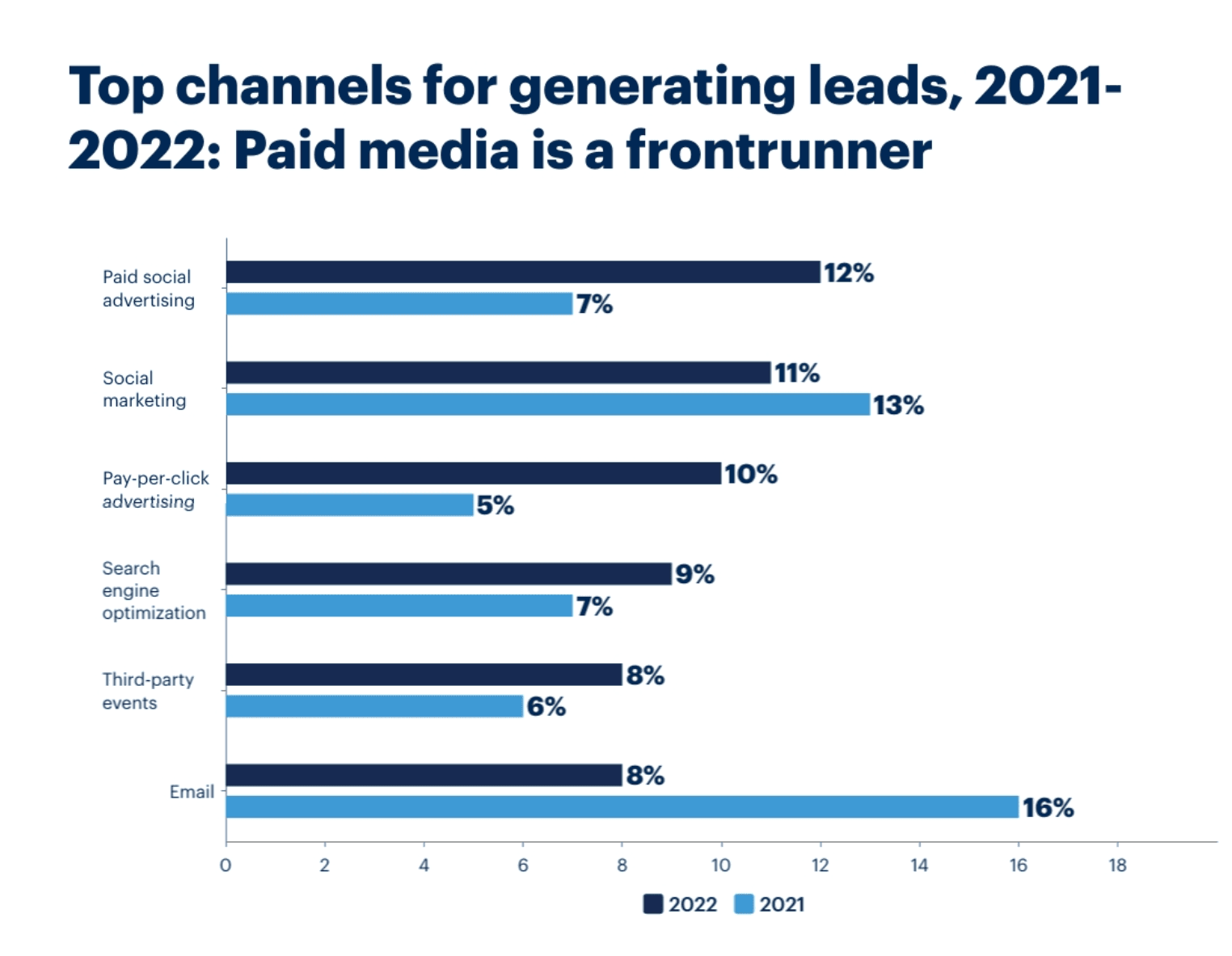
But which platform should you choose: LinkedIn, Facebook, Google, or another channel? The answer to this question lies in understanding your audience.
For instance, GoogleAds are perfect for a B2B brand looking to capture prospects actively searching for solutions or services. It’s like using a shortcut to SEO—your landing pages will appear at the top of search results when people are searching for relevant keywords.
If your sales strategy requires creating awareness first, channels like LinkedIn or Facebook are better choices. Now, the decision hinges on whether your audience is active on these platforms and your budget (note that LinkedIn Ads are more expensive).
8. Affiliate Programs
Whether you already have an extensive customer base or not, an affiliate program is a way to accelerate new customer acquisition.
An affiliate program, also known as a referral program, lets you promote and sell your products or services through your loyal customers and partners—or anyone willing to earn a commission on a sale.
While it does involve sharing a small part of your profit (usually 2% to 15%, depending on your offer's cost) with a third party, it’s one of the least resource-intensive sales channels. In some cases, especially where sales depend on word of mouth, it’s also the most cost-effective strategy.
You can either self-host your affiliate program, tracking sales and managing payouts yourself, or use a third-party affiliate platform to host your program. Using a third-party platform requires minimal effort to set up the program and partner conditions, and it handles tracking and managing the program for you.
The best part is that affiliate platforms often include an online marketplace where potential partners can find you.
9. Trade Shows
Exhibiting your product or service at trade shows is a great way to raise awareness and engage in meaningful face-to-face conversations with your prospects. It’s actually one of the top three marketing investment priorities for B2B companies.
In the B2B world, these shows are often part of major conferences. They attract attendees who are exploring offerings without much purchase intent. This makes trade shows especially effective for entering new markets.
10. E-Commerce Channels
Do you sell physical products to B2B customers? You can increase your reach and drive sales with the following e-commerce channels:
Wholesale B2B platforms. Platforms like Alibaba connect business-to-business (B2B) suppliers and distributors looking to invest in wholesale products.
Niche-specific marketplaces. Distribution channels like ThomasNet offer a more narrow focus and are designed for procurement professionals in specific categories.
General e-commerce platforms. You can create your own online storefront with platforms like Shopify and BigCommerce. BigCommerce, for example, offers dedicated functionality to build buyer portals, manage invoicing, process payments, and other critical features as part of their enterprise-grade platform for B2B sellers.

11. Partnering With Consulting and Professional Services
Maybe you don’t need thousands of customers. Perhaps you only need a few large clients who deliver services to their own customers and need your product to do it effectively.
Here’s how to use partnerships to grow your business:
Look for large agencies and established consultants in your niche. Search LinkedIn and industry marketplaces to find potential partners.
Research their tech stacks. Find a point of contact within the organization and understand their current pain points with the solutions they use.
Create special discounts or pricing plans for these partners. The potential business they bring in will far outweigh the cost of these discounts.
Be ready to support them extensively. Large clients may require custom solutions and account management. Are you ready for it?
Another way to use partnerships to drive sales is by having them resell your product. If your product complements their services, they might be interested in selling it to their customers.
For instance, if you offer CRM software for jewelry brands, a jewelry marketing agency might want to transition their clients from legacy systems to your more user-friendly option.
Choosing the Right B2B Sales Channels for Your Business
Haven’t decided yet which of these channels will fit your strategy best? This process will help you make an informed decision:
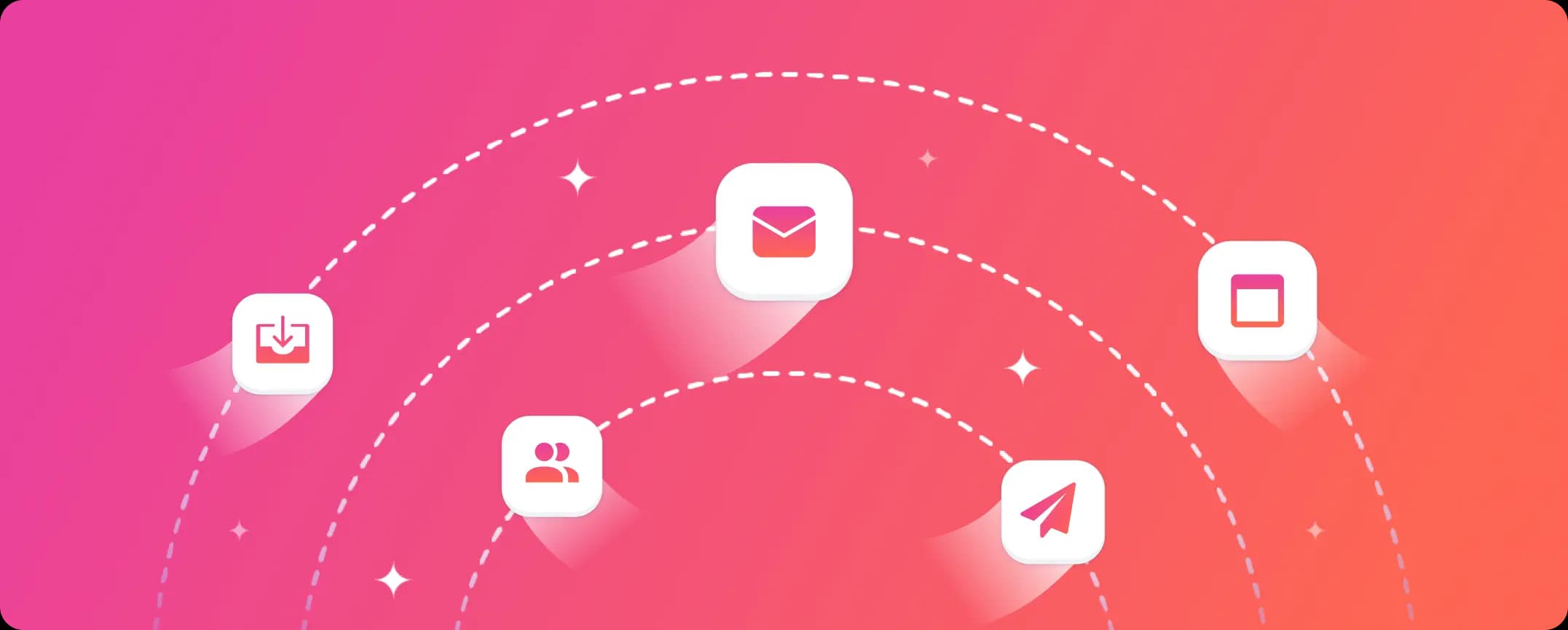
1. Map Out Your Buyer’s Journey
The buyer journey is your prospects’ path to purchase. Your task is to put the “traffic signs” at the right points to direct them toward the shortest path.
You likely have several customer personas, each with distinct buyer journeys. Follow this process to map out the buyer’s journey for each persona:
Understand the role of your persona in the company. Are they an influencer, user, or decision-maker?
Determine where each persona enters your sales funnel. Are they actively searching for a solution, or do you need to build problem awareness?
Outline all interactions potential clients have with your brand, from initial contact to purchase and beyond. Which interactions should be handled by the sales team?
Break down the journey into stages such as awareness, consideration, decision, and post-purchase. What stage does each touchpoint correspond to?
You’ve just created a basic buyer’s journey map. If you already have historical data at hand, this process will be even smoother.
2. See What Similar Businesses Are Doing for Sales
You know your customers; now you need to know your close competitors.
Are they actively building their presence on LinkedIn? Are they investing in paid ads? Are they participating in trade shows?
Take note of their strategies and consider trying them yourself. If these methods work for your competitors, they will likely work for you too.
3. Evaluate the Channel’s Potential for Your Goals
Well, you can't do everything your competitors do at once. You need to prioritize your initiatives.
But how? Here’s the answer:
Be specific with your current objectives. Are you building brand awareness, generating qualified leads, or increasing high-ticket sales?
Turn to your buyer’s journey. Which sales channels align with your business goals and drive prospects along the shortest path to achieving them?
Focus on what drives the biggest impact on your goals at the moment.
4. Continue to Analyze and Optimize
As you implement your chosen channels, you’ll likely uncover discrepancies between your hypotheses and reality—and that's okay.
What's not okay is sticking with channels that aren't delivering results. Monitor your performance metrics and don’t hesitate to adjust your approaches or stop using the channels that show no positive results within a few months.
5. Unlock the Full Potential of Your Sales Channels With AI
Like it or not, your competition is already implementing AI into their workflows.
In fact, as many as 63% of sales leaders say AI helps them stay competitive in their industry. AI allows you to maximize the potential of your sales team and offer more personalized customer experiences—no wonder it’s a priority for most sales teams.
Here are some ideas for how you can augment your sales channels with AI:
Hire AI SDRs to hand over cold outreach and generate more qualified leads, faster. Try Ava now.
Use AI features built into your CRM system. AI copilots will help you craft marketing and sales email campaigns, prioritize leads, and more.
Fill your e-commerce website with AI-generated content.
Generate AI product headshots, images, and video materials for your ads and landing page copy.
Use AI-powered sentiment analysis to analyze conversations with your leads and get recommendations for improving your strategy.
This is just a snapshot of how AI can improve your sales workflows. Start automating your outbound sales process with Ava.
